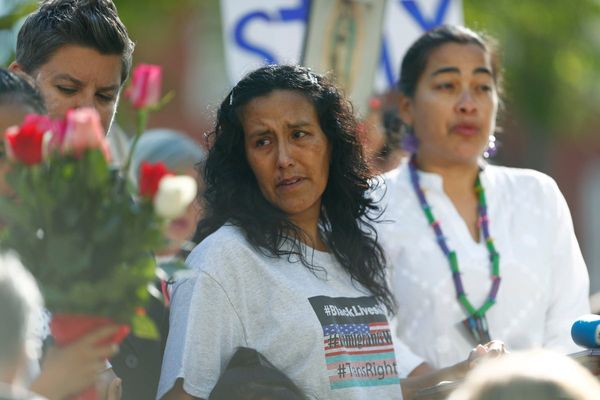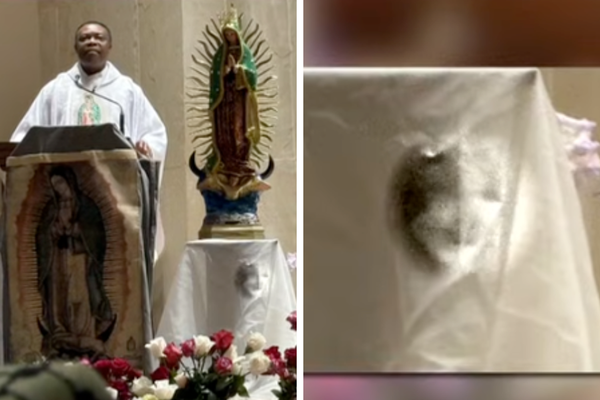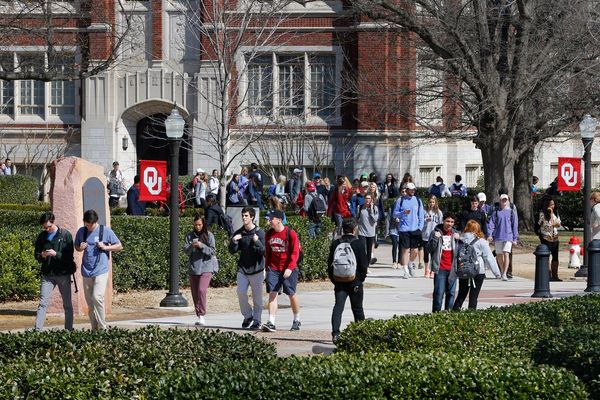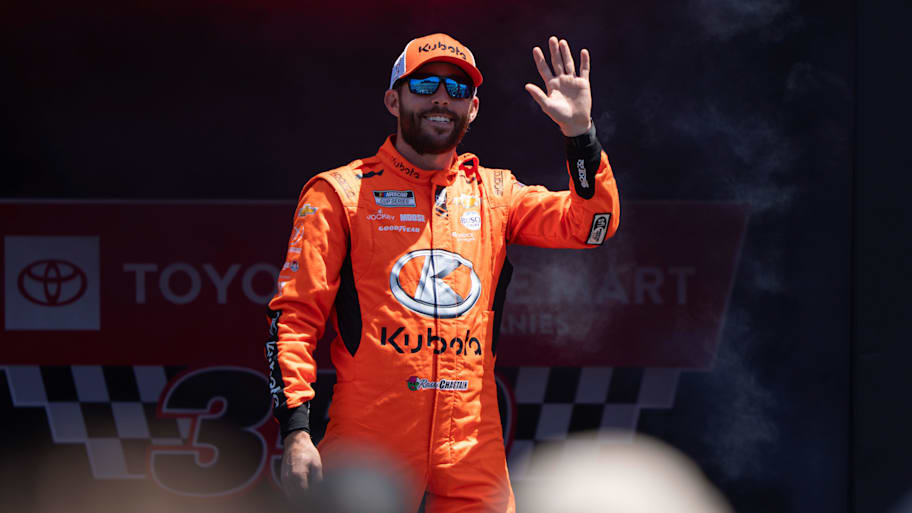
After he won the Coca-Cola 600 on Memorial Day weekend, Ross Chastain climbed atop his number 1 Chevy holding a watermelon aloft. He then smashed it on the asphalt, grabbed a chunk and took a big, messy bite before submitting to a postrace interview. The juicy celebration is a tradition for the 32-year-old Chastain, who hails from a family of Florida watermelon farmers, and was headed toward becoming one himself before he decided in 2012 to pursue a career in NASCAR.
But Chastain is not simply a small-town guy. Currently 12th in the points standings, he’s been a regular on the Cup circuit since 2018, winning six races and establishing himself as one of the most daring drivers in the sport. In 2022, he finished second in the final standings after catapulting himself into Cup contention at Martinsville in October with a move so audacious it became known as the Hail Melon—and has since been outlawed by NASCAR. Running in 10th place on the final lap of the race, he put the pedal to the floor entering Turn 3. While his competitors slowed to take the corner at around 70 mph, Chastain flew past them—and into the outside wall—130. By the time he exited Turn 4, he had moved up to fifth place, qualifying for a spot in the Championship 4.
Recently, Sports Illustrated took a few moments to talk with one of NASCAR’s watermelon man about his career in the sport and his life beyond the track.
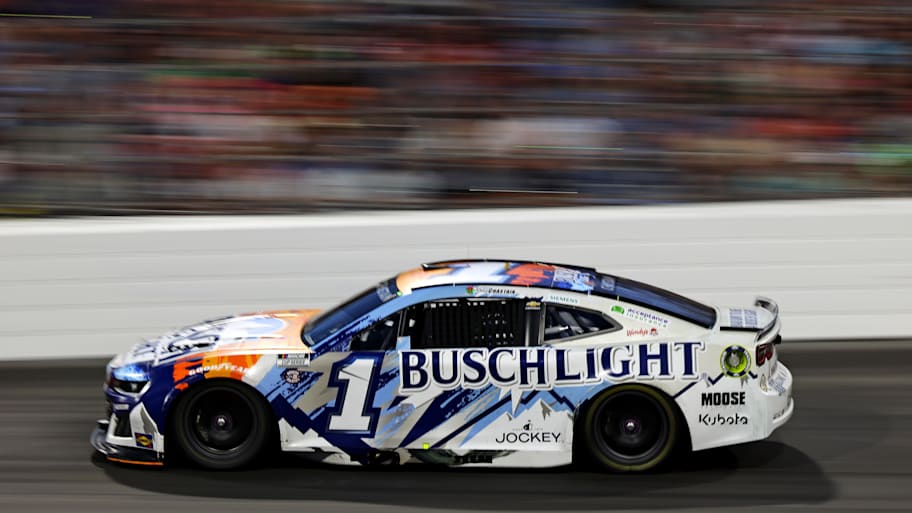
The following interview has been lightly edited for length and clarity.
Sports Illustrated: What was your Welcome to Racing moment?
Ross Chastain: Oh, gosh. In my very first race, I hit the wall. I came off Turn 2, got loose, slid up, and really overcorrected and hit the right front corner of the race car into the wall, and they had to tow me off. The bumper was pushed into the tire, so my dad took a chain and a four-wheeler, and we pulled it out, still hooked to the wrecker. And he asked if I wanted to go back out, and I said, yeah. I was 12 years old and wasn’t scared. So, I did finish my first race, but it wasn’t without some wall contact.
SI: What kind of race car was that?
RC: That was a Monte Carlo. It was 2005, and it was at a track in Florida called Punta Gorda Speedway—it ended its life as 4–17 Southern Speedway. And it was a three-eighths mile, asphalt track.
SI: How many generations of your family have been farming watermelons in Florida?
RC: My great-granddad moved the family south in the ’50s. So, when my grandfather graduated high school, he was looking and had some plans and had made a few trips down. He ended up in Punta Gorda, in the Port Charlotte area. And he started looking for an earlier crop. He had done watermelons and sweet potatoes in Georgia, and it just was not a good life. And he’d heard about and seen the earlier watermelon crop and the prices that the Florida farmers were getting because they were the first domestic watermelons. They were coming up and selling them in Atlanta, and our family was in Thomasville—Ochlocknee—which is in South Georgia, west of I-75. And so, when my granddad graduated high school, the family went south and that’s when the farming becomes the good old days, I guess I’ll say. It wasn’t right away, but my grandfather, and then my dad, built it into a successful farming operation. Before that, from what I can tell, it was not a great life in Georgia.
SI: Did you work on the farm as a kid?
RC: I don’t know what it was like for other kids growing up on farms. We lived closer to town, and the farm was more out of town, and that was where we commercially grew watermelons. It wasn’t in our backyard; it wasn’t by any means. So somehow, my dad and mom made it where it was both a reward to go to the farm and, if something was wrong, a punishment. So, I remember being told to get on the tractor and not get off until they came and picked us up. And we had Nextel walkie-talkies for phones, and I just remember staring at that thing hoping Dad would be like, “Hey, all right, bring the tractor back up here.” And it’d be getting late, dark, and I got school the next day.
And sometimes it was a reward. I remember being real young and Dad and I would leave for school. I’d be in my uniform. We would turn left at the end of our road instead of right to go to town—to go further into town to school. But sometimes we’d turn right and ... what were we doing? “Oh, we’re not going to school today. Let’s go to the farm.” So, man, that meant breakfast and then a day at the farm with Dad. I don’t know how much Mom knew about that. But, yeah, it was both a penalty and a reward.
SI: Your dad used to race as a hobby. What about it fascinated you so much and made you want to try it?
RC: I just wanted to be like my dad. In the field, it’s sugar sand, so it’s like you leave a print everywhere you walk; every tire that rolls through, a tractor or truck leaves a path, leaves a tire track or a footprint—a boot print in my dad’s case. So, I would try to walk in those as a real young kid, and I just remember that. And then seeing my dad race, I wanted to. I would go with him, and he would sneak me into the pits, and then make me stay inside the truck or sit on the roof of his pickup truck. And then some friends would watch with me, or my mom would be there watching with me. And yeah, I just wanted to be like him. We were casual race fans and we watched on Sundays.
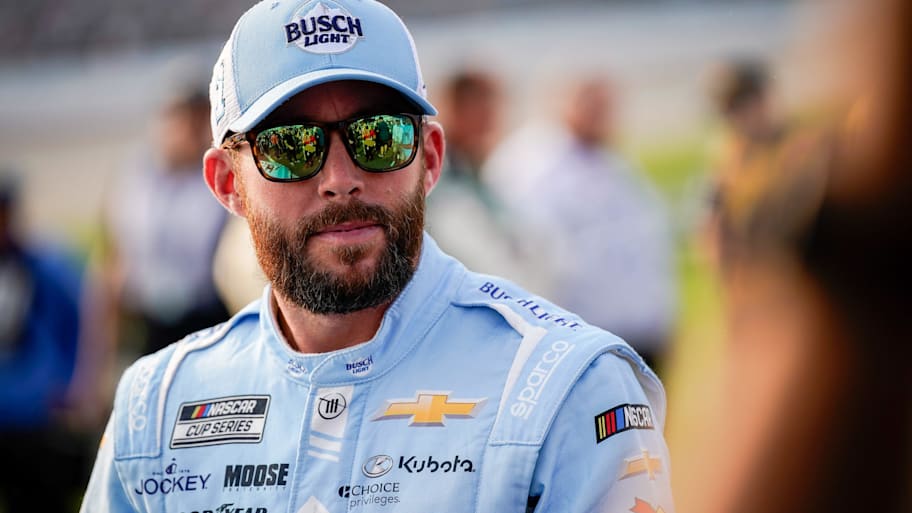
SI: What was he racing?
RC: Those Monte Carlos. FASTRUCK, that was the series. A guy named Bobby Diehl had a series, and they traveled to different tracks. And then they started a kid class, where Mark Martin’s son Matt, Mike Skinner’s son, and then a bunch of local kids and sons of racers raced in it. It could be 12 to 17. My dad got me in that when I was 12 years old. And that's what he had raced. He had rented his first race truck, and then eventually bought one. And my uncle Doug and his friend Dennis, they all got trucks and traveled around racing together.
SI: Were you hooked right away?
RC: Even the first time I drove the truck around or packing house, I was hooked. And I remember dreaming about racing it and having to wait on the next race a couple of weeks away. Yeah, hooked is an understatement. It was all I could think about.
SI: So, how committed to college were you when you spent a semester at Florida Gulf Coast University? Were you planning to study anything? Or were you thinking about driving even then?
RC: I was definitely thinking about driving, but had no plans through high school. I had no intentions of NASCAR. I was racing locally, and then senior year [2011], we went over and raced in the World Series of Asphalt, at New Smyrna, and we won the Limited Late Model division in January or early February, and that kind of made us realize we’d won everything we thought we could win in Florida. The next step was super late models and that expense was going to be massive. And then you’re going to need to travel to really do it right. So, we were looking at that and the cost versus a limited late model, and it just seemed crazy.
And then my dad asked me one day about driving one truck race instead of doing all the super racing. We had first talked about buying a truck and doing that, and I didn’t really think that was the way to go. I just didn’t think we’d ever be competitive. At the time, RCR had a truck team, Turner was a big team, Red Horse was winning races, Germain. So, I had looked at all those teams online and just didn’t think that some farmers out of Florida—I honestly just didn’t think we could compete or even make the race. So, we decided to do one race in July of 2011, right as I graduated high school.
I had full intentions of going to college, and my dad thought—and I agreed—that a degree would serve the farm best down the road. You just didn’t know where the world was going. I thought that having a degree would help the farm down the road. It was all for the farm. It was all to go to work at the farm and take it, grow it, to the next level. And I did my first semester and, honestly, I was more into that, more involved, and just mentally and physically showed up more that semester than I ever did in high school. And my second semester was two weeks in when we made the decision to go full-time racing in the truck series in 2012. So, I submitted everything to FGCU and to the council group and made my case for why I thought I should be able to pause all my scholarships. I had put together several small scholarships and had everything paid for except room and board. I lived at home; it was a 45-minute drive down there.
And they gave me four years. They gave me four years to come back, and I’ve actually seen some of them since then. I saw one of the guys at the track recently and we laughed about it, that we think it worked out that I never went back.
SI: Is that what prompted your move to Charlotte?
RC: I was all in, and if I was gonna do a job and go make anything a success, I needed to be there in person. I'm a big believer that you’ve got to be face-to-face with people, to have the right conversations, to show that you’re doing the work, and to see that the work at the time—we were sponsoring the truck ourselves— that the work was getting done and that I could learn. So, moved up to Bobby Dotter’s shop, SS–Green Light was the team, and drove the 08 truck that year. And, yeah, just needed to be there and be all in.
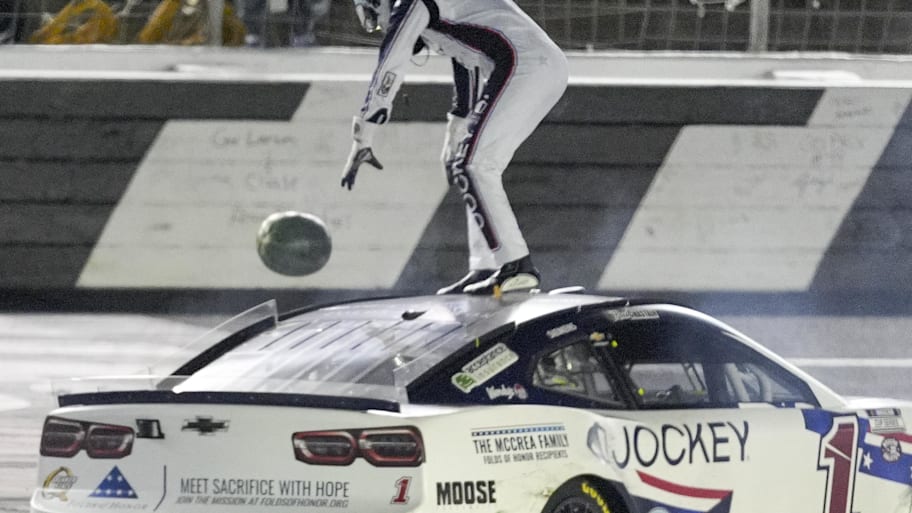
SI: What advice do you have for young drivers out there who want to do what you do?
RC: I think when you’re racing locally, just keep racing. Race local and try to win at your track before you move up. Winning is a unique thing, and it’s so tough. My home track is gone now, but if it was still a thing, the guys that raced there every week would beat me. And I went back and raced [at Punta Gorda] after I was in the truck series and I got beat. And I still get beat when I go to short tracks. So, hone your craft at your track, whatever you’re racing, and it doesn’t have to be that you have to travel across the country. The grass is not always greener on the other side of the country to race, a late model or a sprint car. Race locally and win, and then go race somewhere else if you think you need to do that. But, on top of that, just move up. Whatever class you’re in, if you win in it, move up. I didn’t win a lot because I was ascending from fast kids to fast trucks to late models, and I lost every late model race at my home track. I never won one in the big late model class.
Just keep moving up, and then if you’re going to look at the sport of NASCAR, get ready to sell sponsorship. It’s all about funding it. It takes money to do it, and it’s not a bad thing. Have a good attitude and surround yourself with good people. And if you go to work ahead of time, get the sponsorship, then the on-track stuff just comes with it. And then you get to go race. So, I’ve been a Ross Chastain salesman way more days in my life than I’ve been a race car driver.
SI: Your family’s business sponsored some of your first rides in NASCAR. How important are those ties to you now?
RC: Every driver in NASCAR pays to play. It’s not a bad thing. It’s not a dig on us. Everybody brought sponsorship, from the biggest names that are multigeneration drivers. They’re families have made a career out of driving and they pass that down and set it up for the next generation. Those guys had to put together the funding, and so did I. So, yes, you saw watermelons early on because those are the people that knew me. Nobody else in the world knew who Ross Chastain was, but watermelon people did. Agriculture people did. And they knew my dad and granddad and wanted to be a part of it. Some thought it was cool. Some wanted it for the business aspect. And it fluctuated. And then my performance on the track was a direct result of how much sponsorship we put together. So, it definitely was a watermelon-based entry for a lot of years, and that’s why you see me still involving the ag industry, and talking about it, and smashing watermelons after the races is because I want to shine a bright light on ag. It’s done everything for my family and me. I’m proud to be a farmer and proud of where it got me in the sport.
SI: Can you explain the physics of your Hail Melon move at Martinsville in 2022? It doesn’t make total sense that you can drive into the outside wall and zoom past guys.
RC: I don’t think I can. I don’t understand the physics of it. I don’t. It doesn’t make sense. What allowed that to happen I’ll never truly understand. But even more now, I don’t understand why I thought it would work at the time. And what’s scary to me is, down the backstretch, I had no doubt. I thought, Yes, do it, and it's gonna work! And I was willing to risk it. And it destroyed the car. The car is fine now—it’s in our lobby now at Trackhouse—but, man, it was a massive crash. But it accomplished a big bang in getting us to Phoenix.
SI: Basically, I guess, the goal was to drive into the corner as fast as you could and try to get past people. Was hitting the wall something that might not have happened.
RC: No, I knew my whole intention when I took the white flag was to go into Turn 3 and just let the wall hold me and just see if I could go around the corner faster. I had no concept that it would go faster than anybody in a Cup car has ever gone there. Destroyed the car, but passed five cars and made Phoenix, so definitely was well worth it. But, yeah, not sure why I did it.
SI: Most people go into corners at Martinsville somewhere in the 60 mph range. But you were going in there at like 130 mph.
RC: Yes, and that’s why they outlawed the move. It was such a difference in speed that if somebody spun out, I would have never been able to stop in. We’ve got such safe cars. Now, it’s always dangerous, but I have full confidence in the car and in the walls. But the other cars—if someone spun out back in the wall, and here I come, like you said, at 140 mph, and everybody else is going 70. They fly to a stop. I could have never gotten stopped in time. So that’s why NASCAR outlawed it. I’m good with it. I’m the only one who’s ever done it successfully. Others have tried. I’ve watched it. I’ve watched other guys in Xfinity do it at Darlington and it did not work. So, I’m glad to be the one that did it.
SI: It’s a gutsy move. What have other drivers said to you about it?
RC: They’re all biased. In my opinion, it depended on if it hurt them or helped them. But they didn’t want me to do it. I mean, a couple, you know, fist-bumped me after and were like excited about it, that something new had been done. But we’re also happy that it got outlawed. I mean, we’re all competitors, so they’re not going to get too happy for me.
SI: Do you have a favorite track?
RC: If I had to pick a favorite, I’d say Darlington, for sure. I just like the uniqueness of it, the two ends are different and asphalt seems to age pretty quickly there.
SI: Your victory in the Coke 600 this year, when you went from last to first, was a great win for you. William Byron led almost the whole way, but near the finish, you passing him almost seemed inevitable. What happened there?
RC: We were just better. We worked together with Chevy to build our setups. William had done the test there, and we picked out the best things we thought from the test and we were really good on Saturday and then crashed, blew a tire in practice. So, we had to come from the back, and it took all 600 miles. We might not have won if not for it being the longest race of the season. And you say inevitable, I say tough. It was tough to get by him. He was doing a great job of blocking me.
SI: Is there a favorite way you like to eat it or prepare watermelon?
This article was originally published on www.si.com as Get to Know NASCAR’s Watermelon Man Ross Chastain .
